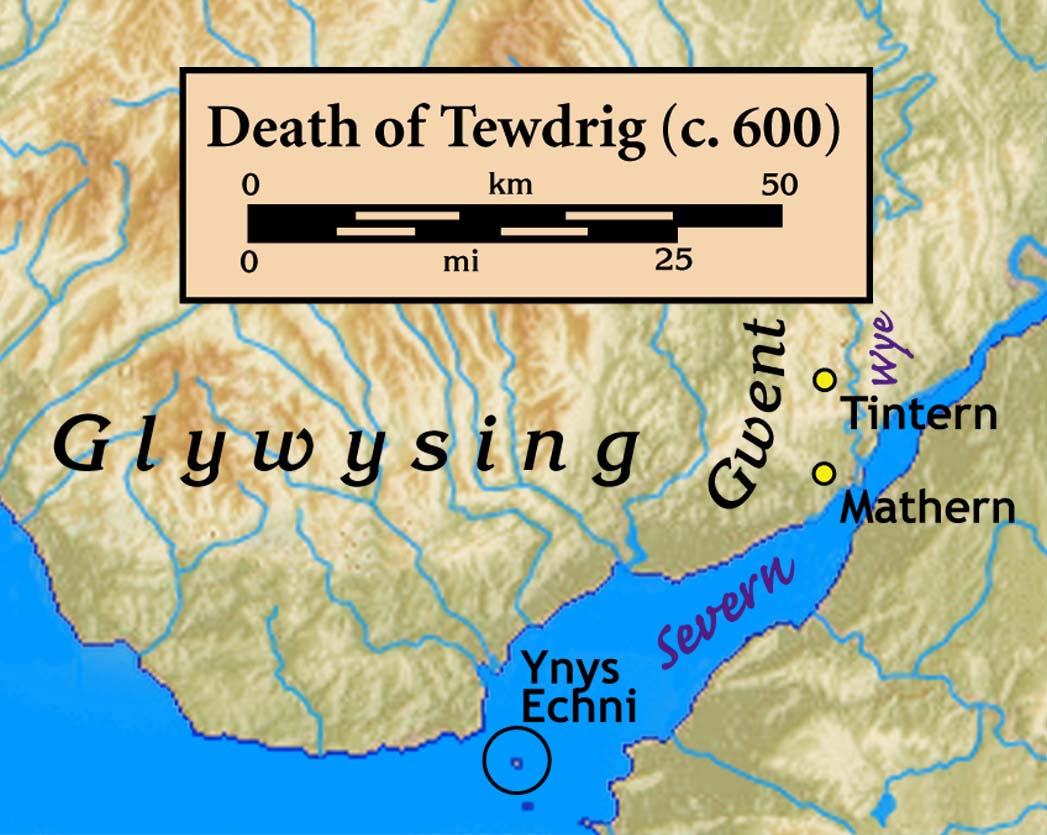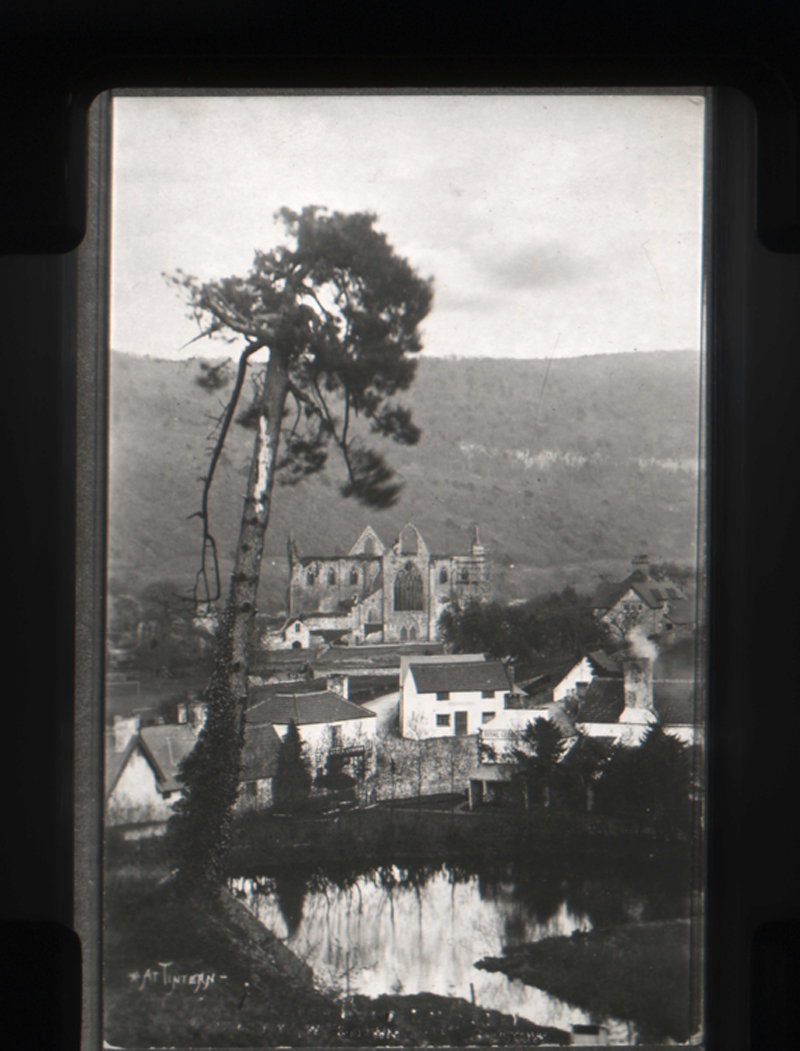|
Meurig Ap Tewdrig
Meurig ap Tewdrig (Latin: ''Mauricius''; English: ''Maurice'') was the son of Tewdrig (St. Tewdric), and a King of the early Welsh Kingdoms of Gwent and Glywysing. He is thought to have lived between 400AD and 600AD, but some sources give more specific dates of c.596 - c.665. Meurig took over the Gwent throne upon his father's abdication in the early 7th century. According to tradition, Tewdric became a hermit at Tintern, but later came to the assistance of Meurig, and they repelled the invading Saxons in a battle at Pont y Saeson (Bridge of the Saxons). Meurig reunited his kingdom with Ergyng (Archenfield) by marrying Onbrawst, the daughter of King Gwrgan Fawr (the Great) of that kingdom. He is said to have been a great patron of Llandaff Cathedral where he was eventually buried. He was the father of Athrwys ap Meurig who, it has been postulated, was the real King Arthur who drove out the invading Saxons The Saxons ( la, Saxones, german: Sachsen, ang, Seaxan, osx, Sahso ... [...More Info...] [...Related Items...] OR: [Wikipedia] [Google] [Baidu] |
Tewdrig
Tewdrig ap Teithfallt (; la, Theodoricus), known simply as Tewdrig, was a king of the post-Roman Kingdom of Glywysing. He abdicated in favour of his son Meurig (Maurice) and retired to live a hermitical life, but was recalled to lead his son's army against an intruding Saxon force. He won the battle, but was mortally wounded. The context of the battle is one of Britons versus invading Saxons, without explicit religious overtones. Since Tewdrig held to a religious lifestyle and was killed while defending a Christian kingdom against pagans, by the standards of that day Tewdrig is considered to be a martyr and a saint. The Latin form of his name is given as 'Theodoric' and his feast day is 1 April. Tewdrig's name appears in a genealogy of Jesus College MS 20, in the line of one of his descendants, but the only substantive information about the person comes from the twelfth century ''Book of Llandaff''. The ''Book of Llandaff'' places Tewdrig's story in the territory of ... [...More Info...] [...Related Items...] OR: [Wikipedia] [Google] [Baidu] |
King
King is the title given to a male monarch in a variety of contexts. The female equivalent is queen, which title is also given to the consort of a king. *In the context of prehistory, antiquity and contemporary indigenous peoples, the title may refer to tribal kingship. Germanic kingship is cognate with Indo-European traditions of tribal rulership (c.f. Indic '' rājan'', Gothic '' reiks'', and Old Irish '' rí'', etc.). *In the context of classical antiquity, king may translate in Latin as '' rex'' and in Greek as ''archon'' or ''basileus''. *In classical European feudalism, the title of ''king'' as the ruler of a ''kingdom'' is understood to be the highest rank in the feudal order, potentially subject, at least nominally, only to an emperor (harking back to the client kings of the Roman Republic and Roman Empire). *In a modern context, the title may refer to the ruler of one of a number of modern monarchies (either absolute or constitutional). The title of ''king'' is u ... [...More Info...] [...Related Items...] OR: [Wikipedia] [Google] [Baidu] |
Kingdom Of Gwent
Gwent ( owl, Guent) was a medieval Welsh kingdom, lying between the Rivers Wye and Usk. It existed from the end of Roman rule in Britain in about the 5th century until the Norman invasion of Wales in the 11th century. Along with its neighbour Glywyssing, it seems to have had a great deal of cultural continuity with the earlier Silures, Miranda Aldhouse-Green &al. ''Gwent In Prehistory and Early History: The Gwent County History'', Vol.1. 2004. . keeping their own courts and diocese separate from the rest of Wales until their conquest by Gruffydd ap Llywelyn. Although it recovered its independence after his death in 1063, Gwent was the first of the Welsh kingdoms to be overrun following the Norman conquest. History Establishment The area has been occupied since the Paleolithic, with Mesolithic finds at Goldcliff and evidence of growing activity throughout the Bronze and Iron Age. Gwent came into being after the Romans had left Britain, and was a successor state draw ... [...More Info...] [...Related Items...] OR: [Wikipedia] [Google] [Baidu] |
Glywysing
Glywysing was, from the sub-Roman period to the Early Middle Ages, a petty kingdom in south-east Wales. Its people were descended from the Iron Age tribe of the Silures, and frequently in union with Gwent, merging to form Morgannwg. Name and early history Glywysing is said to be named after Glywys, a real or legendary early monarch, whose name may continue that of the Romano-British ''*Glevenses'', the territory and citizens of '' Glevum'' (modern Gloucester). According to 12th-century sources, after the death of Glywys, the kingdom was divided into seven cantrefs named for his sons: Cydweli, Gwyr, Margam, Penychen, Gwynllwg, Gorfynydd, and another. These were typically ruled together by the head of the family and sometimes treated as appenage subkingdoms. However historians and researchers claim that this is highly inaccurate as Cydweli and Gwyr were highly likely to be independent cantrefs within the Ystrad Tywi ruled by local warlords and were not under any ruling King ... [...More Info...] [...Related Items...] OR: [Wikipedia] [Google] [Baidu] |
Tintern
Tintern ( cy, Tyndyrn) is a village in the community of Wye Valley, on the west bank of the River Wye in Monmouthshire, Wales, close to the border with England, about north of Chepstow. It is popular with tourists, in particular for the scenery and the ruined Tintern Abbey. Modern Tintern has been formed through the coalescence of two historic villages; Tintern Parva, forming the northern end of the village, and Chapel Hill, which forms the southern end. The village is designated as a Conservation Area. In 2022 the community was renamed from "Tintern" to "Wye Valley" and had boundary changes. History Early history A ford across the navigable and tidal River Wye was in use in Roman times, close to the site of the abbey. After the Romans withdrew from Wales, the kingdom of Gwent emerged, and, according to tradition, in the 6th century one of their kings, Tewdrig, came out of retirement as a Tintern hermit to defeat the invading Saxons in battle, perhaps at a site known today as ... [...More Info...] [...Related Items...] OR: [Wikipedia] [Google] [Baidu] |
Saxons
The Saxons ( la, Saxones, german: Sachsen, ang, Seaxan, osx, Sahson, nds, Sassen, nl, Saksen) were a group of Germanic * * * * peoples whose name was given in the early Middle Ages to a large country (Old Saxony, la, Saxonia) near the North Sea coast of northern Germania, in what is now Germany. In the late Roman Empire, the name was used to refer to Germanic coastal raiders, and as a name similar to the later "Viking". Their origins are believed to be in or near the German North Sea coast where they appear later, in Carolingian times. In Merovingian times, continental Saxons had been associated with the activity and settlements on the coast of what later became Normandy. Their precise origins are uncertain, and they are sometimes described as fighting inland, coming into conflict with the Franks and Thuringians. There is possibly a single classical reference to a smaller homeland of an early Saxon tribe, but its interpretation is disputed. According to this proposal, the S ... [...More Info...] [...Related Items...] OR: [Wikipedia] [Google] [Baidu] |
Ergyng
Ergyng (or Erging) was a Welsh kingdom of the sub-Roman and early medieval period, between the 5th and 7th centuries. It was later referred to by the English as ''Archenfield''. Location The kingdom lay mostly in what is now western Herefordshire (now in England), its heartland between the River Monnow and River Wye. However, it also spread into modern Monmouthshire and east of the Wye, where sits the old Roman town of ''Ariconium'' (Welsh: ''Ergyng'') at Weston under Penyard from which its name may derive; it may have been the first capital. Some maps show Ergyng extending across what is now the Forest of Dean to the River Severn. Monarchy After the withdrawal of the Roman legions from Britain in 410 AD, new smaller political entities took the place of the centralised structure. The area was originally part of the Kingdom of Glywysing (modern Glamorgan) and the Kingdom of Gwent, but seems to have become independent for a period under Peibio Clafrog in the 5th or 6th ce ... [...More Info...] [...Related Items...] OR: [Wikipedia] [Google] [Baidu] |
Llandaff Cathedral
Llandaff Cathedral ( cy, Eglwys Gadeiriol Llandaf) is an Anglican cathedral and parish church in Llandaff, Cardiff, Wales. It is the seat of the Bishop of Llandaff, head of the Church in Wales Diocese of Llandaff. It is dedicated to Saint Peter and Saint Paul, and three Welsh saints: Dubricius ( cy, Dyfrig), Teilo and Oudoceus ( cy, Euddogwy). It is one of two cathedrals in Cardiff, the other being the Roman Catholic Cardiff Metropolitan Cathedral in the city centre. The current building was constructed in the 12th century on the site of an earlier church. Severe damage was done to the church in 1400 during the rebellion of Owain Glyndŵr, during the English Civil War when it was overrun by Parliamentarian troops, and during the Great Storm of 1703. By 1717, the damage to the cathedral was so extensive that the church seriously considered the removal of the see. Following further storms in the early 1720s, construction of a new cathedral began in 1734, designed by John Wo ... [...More Info...] [...Related Items...] OR: [Wikipedia] [Google] [Baidu] |
Athrwys Ap Meurig
Athrwys ap Meurig (c. 605–655) was a prince, and possibly king, of Gwent and Glywysing in Wales. He was the son of King Meurig ap Tewdrig and the father of the later king Morgan ab Athrwys. It is possible he died before his father Meurig and did not live to rule as king himself. History Athrwys's name is spelled variously. It is spelled ''Atroys'' in the 10th century Welsh Harleian genealogies and ''Andrus'' in the early medieval Latin ''Life of Saint Cadoc''; also note ''Andres s' son of ''Morcant s' in the same section of the saint's life, all derived from an early Old Welsh spelling ''*Antres''. He was the son of Meurig ap Tewdrig, a King of Gwent and Glywysing in South Wales.Bartrum, p. 35. His mother was Onbrawst, daughter of Gwrgan Fawr, King of Ergyng. His siblings were Idnerth and Ffriog.Bartrum, p. 547. His wife may have been Cenedlon ferch Briafael Frydig, though it has also been suggested that she was the wife of a later king of this dynasty; his children included ... [...More Info...] [...Related Items...] OR: [Wikipedia] [Google] [Baidu] |
King Arthur
King Arthur ( cy, Brenin Arthur, kw, Arthur Gernow, br, Roue Arzhur) is a legendary king of Britain, and a central figure in the medieval literary tradition known as the Matter of Britain. In the earliest traditions, Arthur appears as a leader of the post-Roman Britons in battles against Saxon invaders of Britain in the late 5th and early 6th centuries. He appears in two early medieval historical sources, the ''Annales Cambriae'' and the '' Historia Brittonum'', but these date to 300 years after he is supposed to have lived, and most historians who study the period do not consider him a historical figure.Tom Shippey, "So Much Smoke", ''review'' of , ''London Review of Books'', 40:24:23 (20 December 2018) His name also occurs in early Welsh poetic sources such as '' Y Gododdin''. The character developed through Welsh mythology, appearing either as a great warrior defending Britain from human and supernatural enemies or as a magical figure of folklore, sometimes associa ... [...More Info...] [...Related Items...] OR: [Wikipedia] [Google] [Baidu] |





